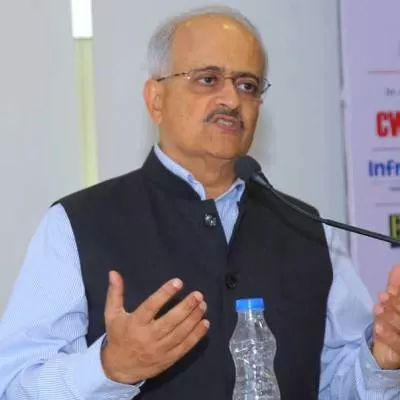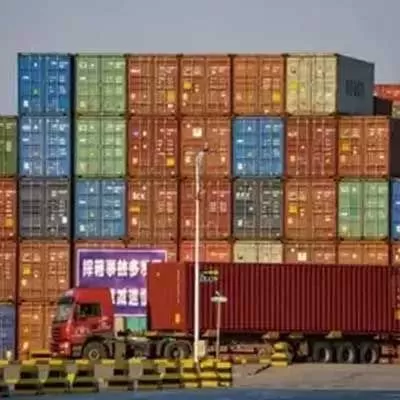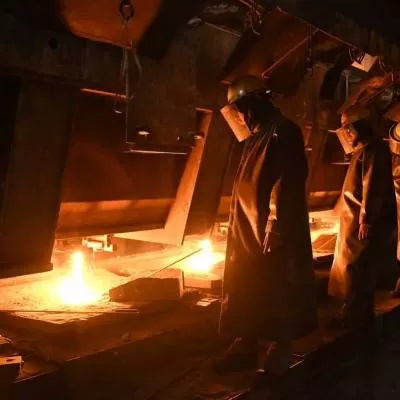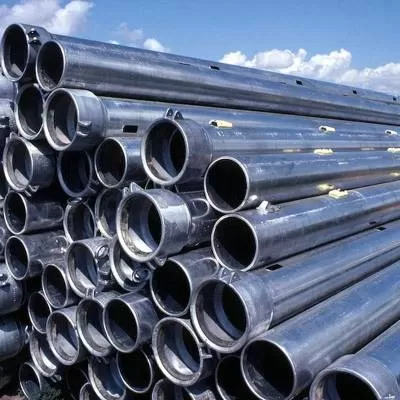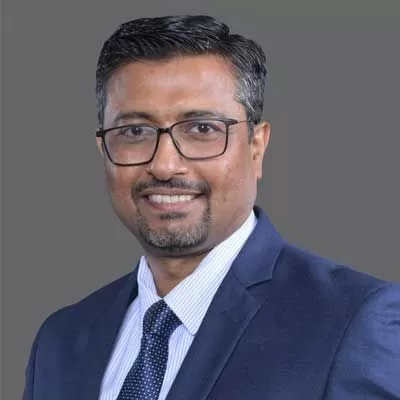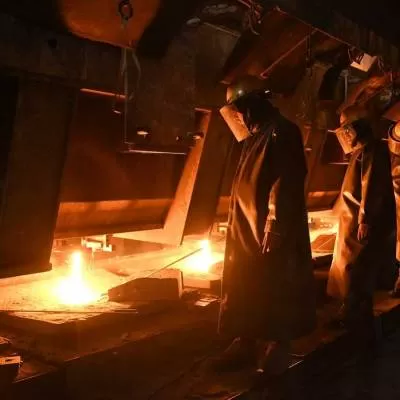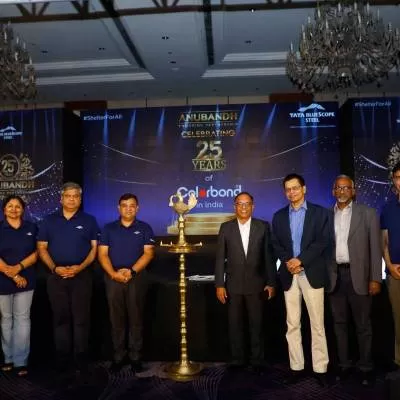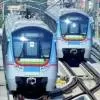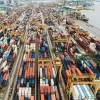- Home
- Building Material
- Steel
- Owing to the use of inferior quality TMT rebars in construction, is India's Rs 5.7 trillion infrastructure investment at risk?

Owing to the use of inferior quality TMT rebars in construction, is India's Rs 5.7 trillion infrastructure investment at risk?
The infrastructure sector is greatly responsible for propelling India's overall development. With intense focus, the government has initiated policies to ensure time-bound creation of world-class infrastructure in the country - in this year's Union Budget, Rs 5.7 trillion has been allocated for infrastructure. <p></p> <p>The government plans to build 50,000 km of roads worth $250 billion by 2022, of which Rs 1 trillion will be spent during 2018-20. A total of 189 port modernisation projects, involving an investment of $22 billion by 2035, have been envisioned. </p> <p>Housing is also a major opportunity in terms of growth. The Indian real-estate market is expected to touch $180 billion by 2020. Affordable housing alone is an opportunity worth Rs 6.25 trillion by 2022 for which an additional 25 million units will be needed - the average cost of such houses is Rs 2.5 million.</p> <p> <span style="font-weight: bold;">Increased capacities of allied industries </span><br /> With such investment in infrastructure, even allied segments like steel and cement industries have witnessed expansion. Figure 1 illustrates how steel production capacities in India have gone up from just 14.23 million tonne (mt) in FY1992 to over 100 mt currently.</p> <p>The scenario in the cement industry in India is similar; current manufacturing capacity stands at 455 mt, shooting up from 161 mt in FY2007. With increasing spending on infrastructure, capacities are expected to scale up even further. </p> <p>While the capacity of the cement sector is expected to touch 550 mt by 2025, for the steel sector, the new steel policy unveiled by the Government of India a few months ago envisages annual steel consumption at 300 mt per annum (mtpa) by 2030. This is three times that of the current consumption of 100 mtpa. </p> <p> <span style="font-weight: bold;">Quantity or quality - where are we heading? </span><br /> With the above parameters, infrastructure development has resulted in many positive changes, like rapid urbanisation, improved standard of living and last-mile connectivity. And, it is no wonder that this has resulted in a major shift in housing. That said, we would like to ask a simple question: Are we really paying attention to quality in infrastructure? How has the quality of materials been in overall infrastructure? Quality gains more prominence in an era where built infrastructure has to be created in a short span of time, with the ability to sustain loads much higher than originally intended. In simple terms, the speed of road construction is important for GDP growth but quality is needed to ensure sustainability and to keep O&M costs under control in the longer term. </p> <p>Add to this, events like accidents, breakdown of bridges, buildings and overall infrastructure, are now subject to a harsher and more unpredictable environment. Events such as the Kolkata bridge fall, foot-over-bridge collapse or caving in of a car parking wall in Mumbai accentuate the dire need for use of better quality raw materials. In fact, they underscore the lack of technical intelligence in the procurement department, which does not pay heed to acquiring good quality raw material and places more emphasis on cutting costs. </p> <p>Hence, while India has seen significant improvement in quantitative terms, we must introspect on where we stand on qualitative parameters. </p> <p>Time to understand - inherent strength If the base of any product is of low quality, the quality of its derivatives will also be low. </p> <p>In infrastructure, while a lot has been researched, written and spoken about raw materials like cement, paints, stones, and other accessories - all visible materials û there is hardly any research available on reinforcement bars (rebars), also known as thermo-mechanically treated (TMT) bars. Rebars form the backbone of any reinforced cement concrete (RCC) structure, whether it is foundation, column, beam or slab, and their quality is critical in defining the overall quality of the structure.</p> <p>Rebars are used in RCC constructions varying from large infrastructure projects like bridges, ports, airports, urban infrastructure, industrial plants and commercial buildings to small RCC-based individual house construction. TMT bars are the backbone of civil construction. They are deeply anchored into concrete to bear the loads of buildings, slabs, beams and columns, along with the loads of people and their belongings. </p> <p>They should be able to withstand the furies of nature, such as windstorms and earthquakes. The consumption of rebars in India is currently estimated at about 24 mtpa valued at about Rs 1.2 trillion.</p> <p> <span style="font-weight: bold;">Importance of rebars</span><br /> Looking at this Rs 1.2 trillion annual market, some may not consider rebars as an important element in infrastructure. However, considering the average steel intensity of about 10 per cent by value in an RCC construction in India, the total construction industry can be valued at 10 times the valuation of the rebar industry, which works out to an astronomical Rs 12 trillion per annum. These are current figures; with infrastructure projects planned till 2025 or 2030, the figure is expected to swell in multiples. With such a large construction industry being critically dependent on the quality of steel rebars used, it is imperative that all efforts are made to produce and promote the use of good quality rebars in India.</p> <p>But are we really making good quality products in the rebar industry? The fact is, there is already a bifurcation, namely primary and secondary quality rebars. While the primary players enjoy 45 per cent of market share, the secondary players enjoy 55 per cent.</p> <p>Primary steel is acquired from a steel-making method known as the converter process. Here, iron ore is converted into steel. </p> <p>This process uses pig iron from the blast furnace. Secondary steel is usually made after adding some alloying elements to the primary steel, often by melting scrap or sponge iron and sometimes a mixture of both. A little ahead in this feature, we will explain the difference between primary and secondary manufacturers. Before that, let's understand if there are any standards imposed on the manufacture of secondary steel.</p> <p> <span style="font-weight: bold;">Are there any standards imposed?</span><br /> No one would deny the fact that all good recipes start with quality ingredients. So the quality and strength of a structure depends on the quality of steel used in the construction. In India, BIS 1786 is a compulsory standard for steel. Steel of optimum quality can only be manufactured by using good quality raw materials and a reliable rolling process. Even if one of these parameters û the raw material or the manufacturing process - is weak, the quality of finished steel will not be on a par with the standards mentioned in the BIS specification (BIS 1786, Amendment 3, 2018). </p> <p>The Ministry of Steel (MOS) and the Bureau of Indian Standards have been instrumental in bringing about a change in terms of the quality of steel being produced in the country. The key focus of their earlier and current endeavours has been on the beneficiation of the consumer. For example, mandatory BIS certification for all grades and sizes, steel quality control order, minimum import prices, safeguard duties and anti-dumping duties have been some of the key steps taken to keep a check on quality and regulate the supply of spurious material into the country.</p> <p>However, despite the steps being taken by MOS and BIS, there are still a few players who manufacture secondary quality steel. Rather, the market share of the secondary players is higher than that of the primary players. Surprisingly, the advertising spend of secondary players seems to be higher than that of primary players, if the number of commercials aired on national-level television is anything to go by!</p> <p> <span style="font-weight: bold;">Prime difference - it's the process that matters!</span><br /> It is important to differentiate between primary and secondary manufacturers. To understand the difference, one has to understand the process of steel manufacturing. To put it simply, the process is as follows: The first step is to select the right raw material, keeping in mind that if the base is of low grade, the end product cannot be expected to be any better. The differentiation starts in the first step itself. Primary players use iron ore, coking coal, limestone, pellets and sinter. But secondary players use scrap of direct reduced iron (DRI), usually purchased from primary players (which is not utilised by many primary players). While scrap is already low grade, DRI is highly susceptible to oxidation and rusting if left unprotected, and is normally quickly processed further to steel. Bulk iron can also catch fire since it is pyrophoric. Unlike blast furnace pig iron, which is almost pure metal, DRI contains some siliceous gangue, which needs to be removed in the steelmaking process.</p> <p>While the first step is a problem with secondary players, the most important second step of blast furnace is also missing in their process of making iron. Hot metal produced by the blast furnace gives the purest form of iron for further conversion to steel. Missing this stage leads to a lot of impurities remaining in the product. Worryingly, these impurities eventually affect the quality of the finished product. Even in the third step, primary players use the basic oxygen furnace of EAF, where initial refining takes place and elements like carbon, silicon and manganese are controlled. Again, no such control is present in the induction furnace used by the secondary players.</p> <p>Further refining occurs at the primary stage, where harmful elements like phosphorous and sulphur are controlled. While we call them harmful elements, they are necessary evils; a certain amount of their presence is necessary. We have provided a table in which the maximum content of those elements are mandated as per BIS 1786. </p> <p> <span style="font-weight: bold;">Importance of refining compulsory evils -the WTC story</span><br /> Everyone remembers the attacks on the World Trade Centre (WTC) in New York in 2001. When WTC caught fire, its steel melted (like any other steel generally would have). However, the test results showed that it collapsed a bit early and imploded owing to higher sulphur content. It is still debated whether the sulphur was present in the steel or added owing to other burning particles around the building. However, the bottomline is that higher sulphur content in steel makes it melt much earlier than steel with controlled content of sulphur. </p> <p>There is an important connection between concrete and steel. In any construction, RCC and steel are the two most important factors. Rather, it is the fusion of both that makes for a perfect combination. RCC has great compressive power but relatively low tensile strength and ductility; therefore, when it fuses with TMT steel bars, it gives rise to a highly ductile and tensile combination. Hence, it is important to understand how ductile and tensile combinations are measured and tested.</p> <p>While understanding the chemical composition, it is also important to understand three important aspects: Yield strength, UTS/YS ratio and elongation (percentage). While yield strength defines the minimum limits of load that can be applied to steel without having any deformation, the UTS/YS ratio defines the energy absorbed by the steel bar. In simple layman's terms, the UTS/YS ratio signifies the time duration one gets for evacuation before failure of steel. </p> <p>The yield strength or yield point of a material is defined in engineering and material science as the stress at which a material begins to deform plastically. </p> <p>Prior to the yield point, the material will deform elastically and return to its original shape when the applied stress is removed. </p> <p>Once the yield point is passed, some traction of the deformation will be permanent and non-reversible. Then comes ultimate tensile stress (UTS), the amount of tensile (stretching) stress a material can withstand before failing or breaking. Here, the most important factor is the UTS/YS factor. Imagine a situation when there is an earthquake, fire or other calamity û the inherent tensile and ductile strength of quality TMT bars provides sufficient time for safe evacuation of people. In structural applications, failure from exceeding the UTS can be catastrophic. A high number of casualties can occur when a structure fails with little to no warning that it is being overloaded. The ability to see components starting to yield can give occupants a warning, allowing them to evacuate. Also, when one component of the structure fails, it can transmit shock and impact loads to other components of the structure; if the peak of these loads also exceeds the UTS of those other components, a single failure can cascade into even greater damage. If the material can yield and deform significantly before failing, it can absorb the impact energy and prevent it from being transmitted elsewhere.</p> <p>While there are many other stories to help us understand how 'evil' contents affect quality, we must first understand how the manufacturers of secondary steel emerge.</p> <p> <span style="font-weight: bold;">How clusters of secondary players emerge</span><br /> Let's look at the root cause of the emergence of secondary players. In the absence of a blast furnace, there is a huge difference between the capex required for setting up primary plants and secondary plants. To quantify it, while the capex needed for a primary manufacturer is around $1 billion, it is just $1 million for a secondary player. As it is not feasible for rebar manufacturers to cater to markets more than 200 km from manufacturing facilities (owing to heavy weight adding to the freight cost), there are clusters created by secondary manufacturers. With lower capex requirement, these players create smaller facilities around raw material sources and even around the markets they want to cater to. Now, the primary players have fewer plants and though they produce a quality product, catering to the larger or pan-Indian markets is not feasible. With this demand-supply mismatch, there is a natural emergence of secondary players who hardly spend on capex for quality TMT production. There are about 16 clusters in India that are closer to places where raw material is available and markets to cater to. While a few have appeared around ship-breaking yards (as ship scrap is available abundantly and, obviously, at cheaper rates), a few clusters have also developed near scrap collection yards. Overall, clusters mostly appear near places with low-quality raw material availability. Indian clusters can be divided into two parts. It also illustrates how there is a 80:20 ratio of scrap and DRI in one part and again a 80:20 ratio of sponge iron-DRI in another. </p> <p> <span style="font-weight: bold;">How much are we risking? <br /> At what cost?</span> <br /> In the absence of a blast furnace, the manufacturing-cost ratio would be 3:4 in favour of secondary players. A secondary player can manufacture (lower quality) TMT at just three-fourths of the cost of primary players. While such is the difference in cost, in times of lower capacity utilisations the primary player suffers more as the operating leverage reduces significantly. <br /> On the pricing front, while different rates are available in different sectors, there is a clear difference of Rs 6,000-8,000 per tonne. <br /> If the primary rebar is available at Rs 48,000 per tonne, secondary rebars are available at around Rs 40,000-42,000 per tonne. <br /> Let's calculate the cost of rebars required to construct a 1,000 sq ft house. Consider that at 3 kg per sq ft (including beams, columns and pillars), the total rebar requirement is around 3 tonne. The cost for using primary bars will be around Rs 144,000. Similarly, for using secondary rebars, the total cost stands at around Rs 120,000. <br /> We are risking the strength of our house structure for a matter of just Rs 24,000! Considering a construction cost of Rs 3,000 per sq ft, the total cost is around Rs 3 million. <br /> It means, the cost saved is just Rs 24,000, which is a mere 0.8 per cent of construction cost. Consider the land cost; we are just saving 0.6 per cent of the total cost of the house.<br /> Need for end-users to step in The worst thing is that end-users are spending almost Rs 150,000 for TMT. And despite paying such a huge cost for the product, their involvement in research and decision-making is very low. <br /> In most cases, the value of a house appreciates. So it is an investment and not a spend. Whether it is a small house or a big one, rebars provide strength. It is important to note that people tend to avoid doing the right research for something that may appreciate in value and, more important, provide safety to the family. It is high time end-users become aware of the kind of TMT quality they are purchasing while building their dream home. </p> <p> While we have given the example of constructing an independent house, even while purchasing a flat or an apartment, we speak about bathroom fittings, amenities, flooring, etc. No one even asks the builder about what kind of TMT is used for the whole structure. </p> <p> So, institutional buyers also form a larger pie of the rebars market. Unless home buyers start asking questions, improvement in institutional buying (on the quality front) seems difficult. End-users must concentrate on quality factors and make an informed decision, at least for safety purposes, and reap long-term benefits. But how would a layman evaluate a TMT bar? There are simple steps one can follow. Our focus here is to create awareness among retail space buyers, as they have less expertise on the technicalities. Large institutional players, on the other hand, know those factors thoroughly. Further, Tier-III and Tier-IV cities form a good chunk of TMT markets, where awareness seems to be really low.</p> <p> <span style="font-weight: bold;">The revelation: Analysing test research </span><br /> While we are speaking about processes and factors that determine the quality of rebars in this feature, it is even more important to make a practical analysis rather than simply focussing on theories. When we started our research, we thought of analysing a few leading companies from our list of both primary and secondary players. Eventually, we understood the gravity of the subject and decided to undertake the analysis on a pan-India basis. It was difficult to collect samples across India owing to the weight factor making transportation difficult. To keep the testing facility uniform, collection of samples at one place was necessary. But with a project involving the larger public interest, our team took on the task zealously. The results clearly indicate that even renowned players, who spend plenty on advertising, fail to clear basic research tests. </p> <p> A good quality rebar should fit into all the chemical and physical parameters stipulated. Failure on even a single parameter implies that we are compromising on safety. </p> <p> To make things simple, we had taken different diameter samples of similar grade (Fe500). Although classification can be done on diameter basis, an interesting factor emerged from the test results. While all primary players managed to get positive results, many secondary players failed on the most common evils: Sulphur (S), Phosphorous (P) and S+P, the consequence of skipping the blast furnace process. In the retail segment, usually TMT bars of 8 mm, 12 mm and 20 mm are widely used; hence, we decided to test all the brands that have a presence in these diameter categories. We added rebars of other diameters as well. However, instead of focussing on different diameters, we analysed based on brand names and how many of their samples (with different diameter) failed or succeeded.</p> <p> While all samples collected from primary players like SAIL, RINL, Tata, JSPL, JSW and Electrotherm managed to maintain the quality benchmark, most different diameter samples from secondary players failed to meet the requirements. Let's discuss this in more detail.</p> <p> <span style="font-weight: bold;">Who flunked and who passed? </span><br /> We see a lot of advertisements from Kamdhenu on national television. However, its 8 mm and 16 mm diameter samples failed as phosphorous and combinations of sulphur and phosphorous were higher than the required quantity. Similarly, we were quite surprised to see a brand like Captain failing to match the quality standards in the 8 mm and 16 mm categories. It was the same story for Indo Star; its 8 mm and 16 mm diameter samples failed on the P and S+P factors. Brands like Majboot failed in the 8 mm, 12 mm and 16 mm diameter segments. SEL, too, joins the list of brands that failed in three different diameters. </p> <p> Shyam, which advertises with one of the highest paid brand ambassadors, did not manage to pass the P and S+P parameters; rather, one of its samples could not pass the yield stress. Brands like Ultrastrong and Fortune failed on at least one parameter. Amba Shakti failed on chemical parameters like P and S+P, besides failing on the yield stress test as well. Even SRBM failed on both the 25 mm and 8 mm samples. All secondary players did not fail though - a few positive surprises came in from Rathi and Jai Bharat.</p> <p> While the motive here is not to target any player or brand, the test results reveal the truth in black and white. Thus, in view of the above, it is desirable to purchase reinforced steel rebars produced by good quality producers who adopt a clean steel-making process and use an advanced state-of-art rolling mill, so that no compromises are made on the stability of a structure. </p> <p> While we are trying to add clarity on quality aspects on the retail front, awareness can only be created with due efforts from the consumers. MOS and BIS have already taken tremendous measures to safeguard the interests of consumers; yet, the onus is on the consumer to select the right kind of product - we have provided a checklist to select the ideal rebar with better quality. While institutional buying is more of a norm in metros and Tier-II cities, here too, builders should be mandated to disclose the kind of rebar used in the construction of large housing complexes and infrastructure projects. With the government making an effort to make realty a more consumer-oriented sector, it will not be difficult to make some disclosures mandatory. Further, retail participation is usually overlooked, though it is a large market. For our part, we have taken the initiative of bringing this subject to the notice of our readers - the ball is now in the consumers' court! </p> <p> 'In its every region, L&T has its own laboratories where all the testings are done. I prefer following the test certificate of the manufacturer and immediately putting it to use. However, there is no reliability today. Therefore, we have random checks in every batch, where we look for the percentage of steel to be collected and tested against elongation, tension, etc. Any claims by the manufacturer must have an authentic certificate, which even the government authority cannot reject.' - <span style="font-weight: bold;">DK Sen, Whole-Time Director and Sr Executive Vice Present (Infrastructure), Larsen & Toubro</span></p> <p> 'We ensure that the product is from the main manufacturer. Our main manufacturers for reinforcement steel are Tata Steel, Rashtriya Ispat Nigam, Steel Authority of India and Jindal Steel and Power. We purchase from manufacturers who have the required facility to ensure uniformity in quality and standard. To understand the tensile strength and run more tests, lot-wise random samples are sent to NABL laboratories, while tests such as sectional weight are done at the site by our employees. We prefer Tata Steel as they manufacture the most constant quality, provide standardisation in length, packing, etc, ensuring minimisation or total avoidance of transit theft.' - Arun Sahai, COO, Ahluwalia Contracts</p> <p> Box 3 'We have not faced any concerns over quality check as we have been using Fe 500d and Fe 415 graded steel. Before unloading it on the site, we get them thoroughly checked. Once a quality assurance and check up is done, I don't see any issue as far as the private sector is concerned.' - PS Patel, Chairman & Managing Director, PSP Projects 'We do not conduct tests at sites as we rely on test certificates submitted by our suppliers. As of now, we have not received any faulty products from our suppliers. Besides Goel Steel and Gujarat NRE, we mainly buy products from the Chhattisgarh area.' - Kishor Viramgama, Chairman and Managing Director, Backbone Enterprises</p> <p> 'Generally, we send the range of samples to third party NABL-accredited laboratories to check the physical and chemical properties. We use products mostly from primary producers and NHAI-approved suppliers, such as SAIL, Tata Steel, Vizag Steel and JSW.' - Mittal Shah, Head of Procurement, Sadbhav Infrastructure</p> <p> 'In terms of quality check of the steel procured, we contact leading laboratories for checking tensile strength, elongation and in some cases, chemical properties. The steel used in our projects are from the Steel Authority of India, Rashtriya Ispat Nigam, Tata Steel, JSW and Jindal Steel and Power.' - DV Raju, General Manager, Materials Department, Nagarjuna Construction Company</p> <p> Evolution of TMT Bars in India It is said, change is the only constant in life. This applies to TMT bars as well. In terms of technology, TMT bars have changed a lot over the years. Since the invention of RCC in 1867, mild steel (MS) was being used as a reinforcing material. Plain MS rebars of grade Fe215 to 250 were used till 1960. Later on, high-strength cold twisted deformed (CTD) bars were produced by cold working process. The yield stress of CTD bars was Fe 415 against Fe 250 of MS rebars. Though the chemical compositions of MS and CTD bars began to be the same, the physical strength of CTD bars was 60 per cent higher than MS bars. TMT (thermo-mechanically treated) bars, which provide an optimal combination of high strength, ductility, bendability and other desirable properties, were introduced in India between 1985 and 1990. <br /> Now, there are hardly any CTD facilities in the country. </p> <p> <span style="font-weight: bold;">Process specification of TMT</span><br /> Thermo-mechanical treatment is an advanced heat treatment process in which red hot bars coming out of the last rolling mill stand are rapidly quenched through a series of water jets. Rapid quenching provides intensive cooling of the surface, resulting in the bars having a hardened surface at the top, while the core remains red hot. The rebars are then allowed to cool in ambient conditions. During the course of such slow cooling, the heat released from the core tempers the hardened surface while the core is turned into ferrite-pearlite aggregate composition. The TMT process thus changes the structure material to a composite structure of ductile ferrite-pearlite composition with a tough surface rim of tempered marten site. Now, higher grades like Fe 500, 550, 600, 650 and Fe 700 are being introduced. </p> <p> If a bridge requires consumption of 1,000 tonne of MS reinforcement for construction and if it is constructed with TMT bars in place of MS bars, the net consumption will only be 400 tonne.</p> <p> Some Clusters of Secondary Producers<br /> Mandi Gobindgarh (near Ludhiana)<br /> Ghaziabad, Muzaffarnagar (West Uttar Pradesh)<br /> Kotdwar (Uttarakhand)<br /> Jaipur/Bhiwadi<br /> Kanpur/Lucknow<br /> Raniganj<br /> Durgapur<br /> Raipur<br /> Jalna (Maharashtra)<br /> Bhavnagar (Gujarat)<br /> Erode (Tamil Nadu)<br /> Rourkela.<br /> For the full report, follow the link: http://www.firstconstructioncouncil.com/report.php</p>


